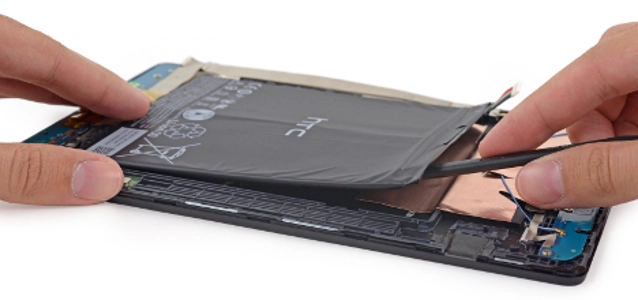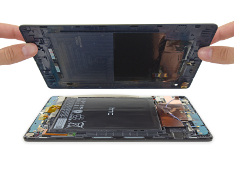
© ifixit
Teardowns |
The Nexus 9 Teardown
If we were to describe the HTC/Google Nexus 9 in a single word, it would be “meh.”
Yes, it has a legit screen and a solid processor, but we’re hardware and repairability connoisseurs—we want the rest of the internals to match the gloriousness of the main components. Yet this tablet feels like an exercise in corner cutting, even though HTC/Google charges $400 to say hello to this little friend.
At least the Nexii of yesteryear got you some repairability for your hard-earned money. With the Nexus 9, you can still easily remove the rear cover—and we thank HTC kindly for that. However, everything else is a mess of glue and hackery. It’s like HTC stuffed their glorious CPU and display into a sack full of other parts, and whatever stuck ended up in the Nexus 9. The device gets a 3 out of 10 repairability score—just a smidge above its much more internally-sophisticated rival, the iPad Air 2.
Teardown highlights: Huzzah! The rear cover is held in place with various welcoming clips, instead of fierce adhesive. No tools are required to pop this cover off—just some sturdy fingernails. All seemed to be going well, until we noticed the rear-facing camera was still lodged in the rear case... The rear-facing camera seems to fit a little too snugly in its cubicle in the rear case; it got pulled right out of its ZIF connector on the motherboard. To make matters worse, the camera connector is on the underside of the motherboard, meaning you'll have to remove the board to reconnect the camera. The 8 MP rear-facing camera is labeled as 3BA804P1 K1419 A 1.0. A bit of Googling reveals that this is the same camera module used by the HTC Desire 610 smartphone—you decide if that’s good or bad. Separating the LCD from the display assembly requires an insane amount of heat, patience and prying. This is some of the toughest adhesive we've ever encountered in a tablet—on par with, though in lesser quantity than, the infamous Surface Pro. Yet another daughterboard! This one connects the motherboard to the lower speaker, vibrator, and a mysterious loner component, well off the board on its own cable... Mystery solved: it's an Asahi Kasei AK8963 3-axis electronic compass, like we saw in the Nexus 5—probably off in lonertown to avoid electromagnetic interference from the rest of the device. It appears that the multitude of tiny boards we removed had more of a purpose than just being annoying—two of them seem to form the backs of speaker boxes for the front-facing stereo speakers. We're no audio experts, but these speakers look a lot more like low-volume earpiece speakers than the far-heftier speakers found in the latest iteration of the iPad Air.
Hidden behind the LCD are a few ICs:
- Synaptics S7504B 43210570 Touchscreen Controller
- C54B M46956 422
- NVIDIA Tegra K1 Dual Denver 64-bit Processor (labeled as T4K885 01P TD590D-A3)
- Elpida/Micron Technology FA164A2MA 16 Gb (2 GB) RAM
- Samsung KLMAG2GEAC 16 Gb eMMC NAND Flash
- Broadcom BCM4354XKUBG MIMO 5G Wi-Fi 802.11ac/Bluetooth 4.0/FM Module
- Texas Instruments TI47CFP91 T65913B3D9
- Broadcom BCM4752 Integrated Multi-Constellation GNSS Receiver



